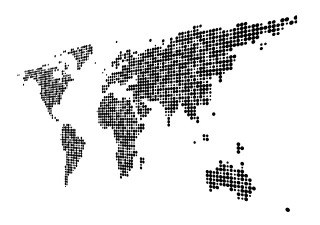Website Localisation Services in multiple languages

Our professional linguists use their native understanding of culture and idiom to maximise the online potential of your business.
A straight word-for-word translation will not suffice when adapting a website for viewing in other countries or cultures; a straightforward word-for-word translation will not suffice.
True localization requires the original website’s content to be translated in a culturally appropriate manner.
This means taking into account subtle differences in the language and dialect of the text and ensuring that the website’s content – such as images and colour schemes – are adapted to the culture of the country/region in which the website will be viewed.
Why is website localisation important and what will it do for my business?
By creating country-specific or region-specific, websites, companies can access larger markets.
Localisation also…
- Makes your website attractive to local search engines.
- Takes into account dialectical and grammatical differences between variants of the same language.
- ….as well as legal and regulatory differences.
- Ensures sensitivity in religious and political contexts.
Our translators are familiar with these concerns and draw upon a wealth of knowledge and experience to ensure the full localization of your webpage. Through our extensive experience in translating and interpreting in various languages, industries and specialist areas, we consider all aspects when incorporating the necessary changes to make your website’s message fully localized. Although our translators do not employ a literal word-for-word translation, they ensure an accurate translation of the source text, with the original intention and message of the website preserved.
Further information about website localisation
After English, Chinese, Spanish, Japanese, Portuguese and German are most commonly used by Internet users. Knowledge like this can help your business connect effectively with the rest of the world.
Many native speakers, such as English, Spanish, Portuguese, Chinese, etc., have spread dues geographically to immigration and colonialism. Consequently, they have become widely used in many countries and regions different from the original. Naturally, different national varieties of these languages have evolved due to this.
Among the common linguistic differences are pronunciation, spellings and grammatical patterns. It is crucial to the success of companies that they take such differences into account. For example, when creating websites for specific regional markets, using the language of the community being targeted is likely to become the factor determining the sales figures. In other words, the chances of people buying the products offered very much depends on whether the supplier speaks the demand side’s language!
English Language Localisation
There exist numerous differences between American English and British English. In terms of spelling conventions, the most notable differences are perhaps the change from “ou” to “o”, as in ‘colour’ and ‘favourite’, in British English to ‘color’ and ‘favourite’ in American English, and the swapping of a British English “s” to a “z” (as in standardize/standardize, realize/realize). There are many other words whose meanings become ambiguous when applied to the other vernacular such as “inquiry” and “enquiry” and “interpreting” and “interpretation”, as well as many differences in everyday vocabulary such as handbag/purse, pavement/sidewalk and queue/line. Apart from these differences, American English and British English differ rather dramatically in pronunciation and grammar patterns, especially in the ways tenses are used.
Spanish Language Localisation
Besides Spain, several other Spanish-speaking countries exist, amongst which are Mexico, Colombia, and Argentina. Even though the spelling has been standardized in these countries, there are many variations in pronunciation and the ways words are used. It is helpful for business companies targeting the Spanish-speaking population to know that Argentinian Spanish is often used to sell products to the countries in Latin America, as it is typically Latin American Spanish. On the other hand, however, Mexican Spanish is the kind of Spanish spoken in the United States.
Portuguese Language Localisation
The differences between European Portuguese and Brazilian Portuguese again, as in the English variations, include pronunciation, spelling conventions, grammar and usage. In contrast to the Spanish and English varieties, the differences between the Portuguese types are significant. Books from Brazilian authors like Paulo Coelho require heavy editing if they are released on the Portuguese market.
Chinese Language Localisation
Chinese encompasses a large number of dialects, from Mandarin to Cantonese. The standard dialect (Mandarin), used for official purposes by both the PRC and the ROC (Taiwan) government, is universally used in publications and on websites. However, even within written Mandarin, there are two different character systems: simplified and traditional Chinese. While simplified characters are primarily used in Mainland China, Traditional characters are used in ROC and the Special Administrative Regions (SAR) of Hong Kong and Macau. This, of course, means that websites, advertisements, and published materials need to be localized to cater to the audience’s specific needs.
